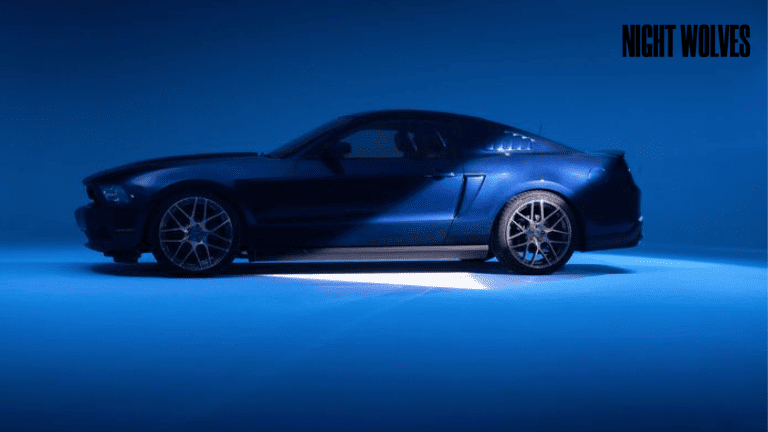The automotive advertising landscape is undergoing a dramatic transformation as top creative directors increasingly turn to full-CGI automotive production. This shift is driven by a combination of creative, practical, and strategic benefits that CGI (Computer-Generated Imagery) offers over traditional car commercial production methods.
The Benefits of CGI Automotive Production
The decision to go full-CGI Automotive Production isn’t just a trend — it’s a strategic advantage. Here’s what top creative teams are gaining:
- Photorealism: Today’s CGI car visuals rival real-world photography in detail and realism, making the debate of CGI vs traditional photography more relevant than ever.
- Flexibility: Change colors, trims, or lighting with a click — no reshoots needed.
- Scalability: Launch entire vehicle lines with dynamic CGI assets from a single master model.
In essence, CGI is not just replacing traditional production — it’s expanding what’s possible, especially in the realm of CGI in car commercials.
The Future of Automotive Marketing: Why CGI Leads the Way
- Unlimited Creative Freedom
CGI empowers creative directors to break free from the constraints of reality. Cars can be showcased in any imaginable environment—from futuristic cities to otherworldly landscapes—without the logistical and budgetary challenges of real-world shoots. This creative latitude enables campaigns that are visually stunning and memorable, helping brands stand out in a crowded market. - Speed and Efficiency
With CGI, marketing assets can be produced in days instead of weeks or months. There’s no need to wait for production models, ideal weather, or location permits. Brands can launch pre-release campaigns using only CAD data, accelerating time-to-market and allowing for agile marketing strategies. - Cost-Effectiveness
Traditional car shoots involve significant expenses: transporting vehicles, hiring crews, securing locations, and managing unpredictable variables. CGI eliminates these costs, allowing for digital manipulation and updates without reshoots. Over time, this results in substantial savings, especially for global campaigns. - Consistent Quality and Brand Control
CGI offers precise control over lighting, reflections, and backgrounds, ensuring every visual aligns perfectly with brand guidelines. This consistency is difficult to achieve with live-action shoots, where environmental factors can introduce variability. - Enhanced Customer Engagement
CGI enables interactive experiences, such as online configurators and virtual showrooms, where customers can explore, customize, and even “test drive” vehicles digitally. These immersive tools increase engagement and help build stronger emotional connections with potential buyers. - Sustainability and Environmental Benefits
By eliminating the need for physical shoots, CGI reduces the carbon footprint associated with transporting cars and crews, aligning with the growing demand for eco-friendly marketing practices.
CGI vs Traditional Photography in Car Commercial Production
| Feature | Traditional Photography | CGI Automotive Production |
| Creative Flexibility | Limited by real-world constraints | Unlimited, virtual environments |
| Production Speed | Weeks to months | Days to weeks |
| Cost Structure | High recurring costs | Lower long-term costs |
| Visual Consistency | Weather/location dependent | Fully controlled |
| Interactivity | Minimal | Highly immersive (AR/VR) |
| Sustainability | Lower | Higher |
CGI in car commercials is quickly becoming the industry standard, offering clear advantages over traditional methods in both creativity and efficiency.
Future Trends in Automotive CGI
The future of automotive CGI is bright and closely tied to broader industry trends. As digital transformation accelerates, expect the following developments:
- Hyper-Realistic Visuals: Ongoing advances in rendering and AI will make CGI indistinguishable from reality, further blurring the line between CGI and traditional photography.
- Personalization at Scale: Brands will use CGI to create tailored content for diverse markets, with dynamic assets that can be quickly updated or localized.
- Integration with Emerging Tech: CGI will power AR/VR showrooms, interactive ads, and virtual test drives, offering consumers immersive experiences that were previously impossible.
- Sustainability: As the automotive industry prioritizes eco-responsibility, CGI’s digital-first approach supports greener marketing strategies.
- Collaboration and Remote Production: CGI enables global creative teams to work together seamlessly, regardless of physical location, driving innovation and efficiency.
Impact on Automotive Creative Direction
Creative directors are now able to:
- Push the Boundaries of Storytelling: By leveraging CGI, they can tell more imaginative stories and visualize concepts that were previously impossible or prohibitively expensive.
- Accelerate Innovation: Rapid prototyping and real-time modifications enable faster creative iteration and feedback, fueling innovation in both design and marketing.
- Set New Industry Standards: As consumer expectations rise, CGI is becoming the norm for automotive campaigns, with traditional photography reserved for select, heritage-driven projects.
Conclusion
Top creative directors are embracing full-CGI automotive production. Why? Because it delivers unmatched creative freedom, faster turnaround times, cost savings, and sustainability. As technology advances, consumer expectations are also rising. CGI is setting a new standard in automotive marketing. It empowers brands to innovate, captivate audiences, and build stronger connections like never before.

